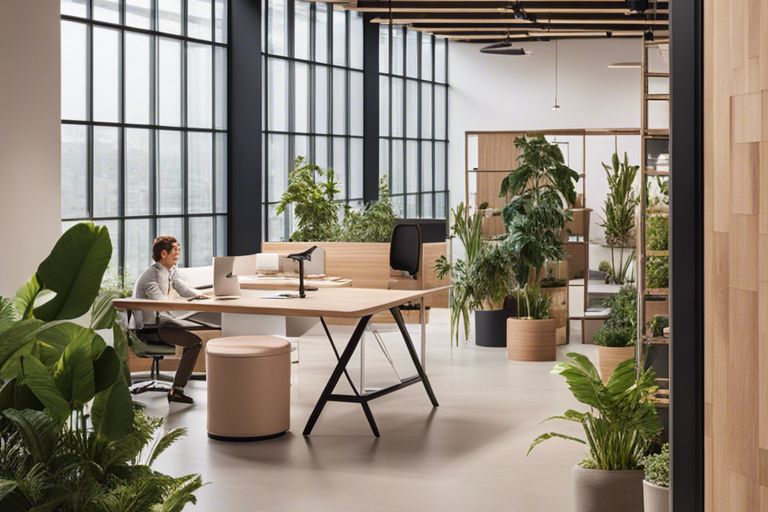Hey there! Have you ever wondered why more and more professionals are ditching traditional design methods and opting for computer-aided design (CAD) software? Well, let me tell you, the shift towards CAD has been a game-changer in the design industry, and I'm excited to share why. In this blog post, we'll explore the benefits of CAD over traditional design approaches and discover why it's becoming the go-to tool for professionals like you. So, if you're curious about how CAD can revolutionize your design process and enhance your creativity, keep reading and get ready to embrace the digital design era!
Quick Answer
More professionals are adopting software, such as Computer-Aided Design (CAD), over traditional design methods because it offers numerous benefits. CAD allows you to easily create accurate and detailed designs, improve collaboration and communication with teammates, and streamline the entire design process. Embrace this technological advancement for enhanced productivity and efficiency in your work.
How does CAD improve design accuracy?
Design accuracy is greatly improved by CAD (Computer-Aided Design) due to the elimination of human errors and the creation of precise measurements. With CAD software, you can easily create and modify designs, ensuring your project is detailed and error-free. The software provides accurate measurements and dimensions, allowing you to create precise 2D and 3D models. It also offers simulation tools that allow you to test and validate your designs before physical production, saving time and reducing costly mistakes. Additionally, CAD enables better collaboration and communication among designers and engineers, improving accuracy by eliminating misunderstandings. Overall, CAD empowers you to create more accurate designs that align with your vision.
What challenges does CAD present in comparison to traditional design?
One challenge that CAD presents in comparison to traditional design is the initial learning curve. As a designer, you need to invest time and effort into learning how to use the CAD software effectively. Additionally, CAD may require more technical skills and knowledge, such as understanding complex computer-aided design techniques. Another challenge is that CAD can sometimes limit your creativity. While it offers many features and capabilities, working solely within the digital realm can restrict your ability to think outside the box or experiment with physical materials. However, with practice and experience, you can overcome these challenges and harness the power of CAD for more efficient and precise design.
How has CAD impacted the design process?
A number of innovations in the design process have been attributed to Computer-Aided Design (CAD). Firstly, with CAD, you can easily create, modify, and visualize 2D and 3D designs, which allows for better communication and collaboration with clients and team members. Additionally, CAD automates repetitive tasks and ensures accuracy, saving you time and effort. It also enables you to test and simulate various design scenarios quickly, leading to more innovative solutions. Moreover, CAD simplifies the manufacturing process by generating accurate specifications and reducing errors during production. Overall, CAD has greatly enhanced the efficiency, precision, and creativity in the design process, making it an indispensable tool for designers like you.
What makes CAD a more attractive option for professionals?
Due to its many advantages, Computer-Assisted Design is a more appealing option for professionals. Firstly, it allows you to create accurate and detailed designs in less time, enhancing your productivity. The advanced tools and features enable you to easily modify and iterate designs, saving you valuable time and effort. Additionally, CAD offers precise measurements, reducing the chances of errors in your designs. It also enables you to visualize your designs in 3D, providing a better understanding of the final product before physical prototyping. Furthermore, CAD facilitates collaboration, allowing you to easily share and edit designs with colleagues. Overall, CAD is a powerful and efficient tool that enhances your creativity, productivity, and collaboration in your professional work.
1. CAD | Definition, Benefits and Limitations
Final Words
To conclude, the debate between CAD and traditional design is one that can have a profound impact on professionals across many disciplines. More and more professionals are recognizing the benefits of adopting software in their design processes. By utilizing design software, you can tap into the power of digital design and technology, allowing for increased efficiency, productivity, and creativity. Whether you are in the field of architectural design, engineering design, graphic design, or industrial design, incorporating CAD software and 3D modeling can revolutionize your work. This question is relevant to you because it has the potential to greatly improve your life and career. Embracing software and digital design tools can help you create more innovative and precise designs, ultimately leading to greater success and satisfaction in your profession. So, why wait? Start exploring the world of design software today and unlock your true creative potential.
FAQ
: CAD stands for Computer-Aided Design. It is a software tool that allows professionals to create, modify, analyze, and optimize designs in various industries, such as architecture, engineering, and manufacturing.
Q: How does CAD differ from traditional design?
A: Traditional design involves the manual creation of designs using pencils, paper, and other physical tools. CAD, on the other hand, utilizes computer software to create digital designs that can be easily edited, manipulated, and shared.
Q: Why are more professionals adopting CAD software?
A: There are several reasons why more professionals are adopting CAD software. Firstly, CAD enables faster design iteration and revision, saving time and effort compared to traditional methods. Additionally, CAD software offers greater precision and accuracy, reducing the chances of human error. Moreover, CAD facilitates easier collaboration and sharing of designs among team members, leading to increased productivity and efficiency.
Q: What industries benefit from CAD software?
A: CAD software is widely used across various industries, including architecture, engineering, product design, manufacturing, and even fashion. It enhances the design process, improves productivity, and ensures better outcomes in these industries.
Q: Can CAD software replace traditional design completely?
A: While CAD software offers numerous advantages, it may not completely replace traditional design methods. In some cases, physical prototypes or hand-drawn sketches may still be required for certain design stages or as a form of communication with clients or stakeholders. However, CAD is undoubtedly a more efficient and preferred method nowadays.
Q: Is CAD software easy to learn for beginners?
A: CAD software can have a learning curve, especially for beginners who are not familiar with design software. However, most CAD solutions provide user-friendly interfaces and offer various resources such as tutorials, online courses, and forums, making it easier for beginners to learn and master the software.
Q: Are there different types of CAD software?
A: Yes, there are various CAD software options available in the market, each with its own features and capabilities. Some examples include AutoCAD, Solidworks, SketchUp, Revit, and Fusion 360. Professionals can choose software based on their specific needs and industry requirements.
Q: Are there any disadvantages to using CAD software?
A: While the benefits of CAD software outweigh the drawbacks, there are a few disadvantages. CAD software can be expensive, especially the high-end professional tools. Additionally, there may be a learning curve for beginners. Moreover, some argue that the use of CAD software may reduce the tactile and artistic aspects of traditional design.
Q: Can CAD software be used by individuals or smaller businesses?
A: Yes, CAD software is accessible to individuals and smaller businesses. There are several affordable or even free CAD software options available, which provide basic design functionalities. These tools can be highly beneficial to individuals and smaller businesses looking to enhance their design capabilities.
Q: How does CAD software impact the future of design?
A: CAD software plays a significant role in shaping the future of design. It enables professionals to create more complex and innovative designs, streamline the design process, and explore new possibilities. With advancements in CAD technology, such as virtual reality integration and artificial intelligence, the potential for groundbreaking design solutions is immense.


